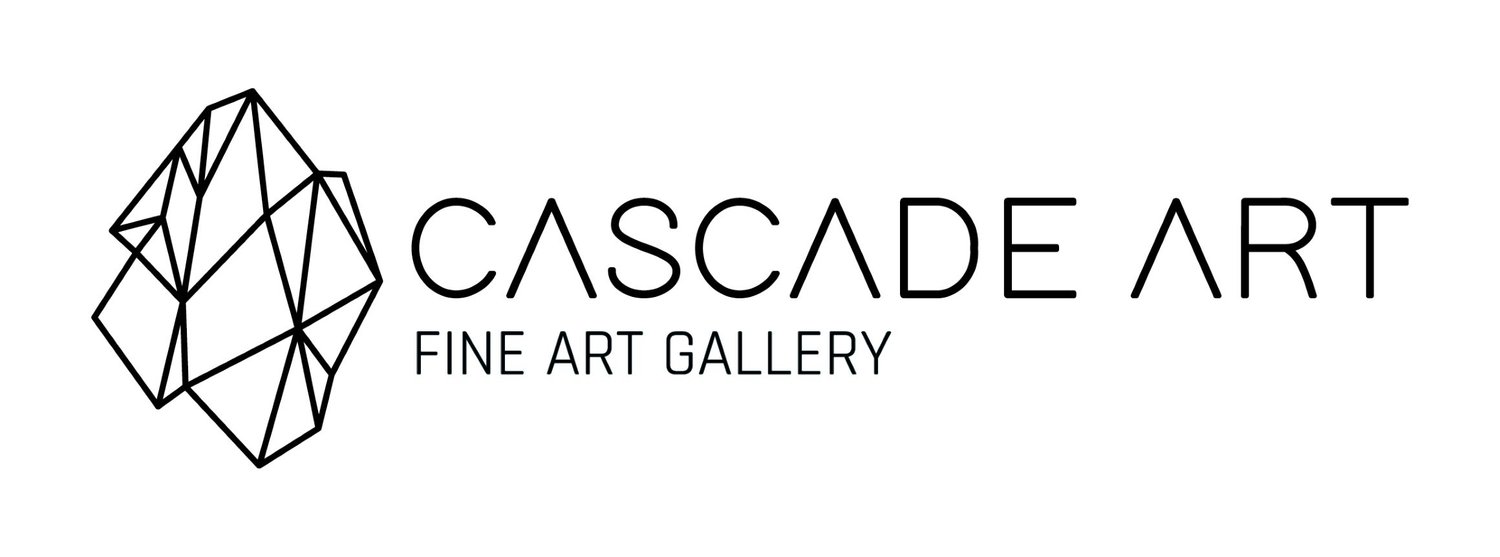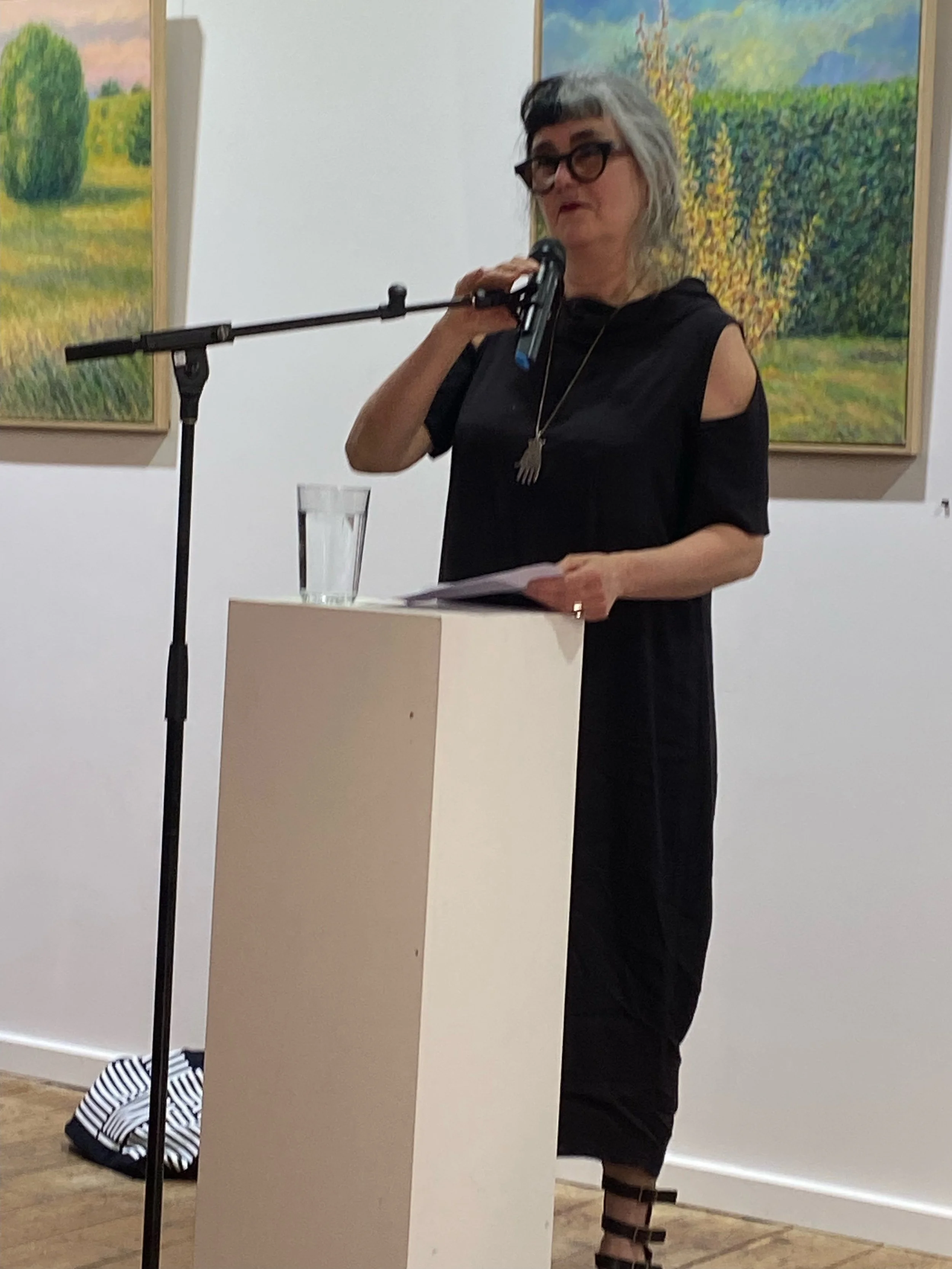GABRIELLE MARTIN: This Place
A exhibition of new paintings
THURSDAY 10 APRIL - SUNDAY 4 MAY 2025
Opening Event: 2pm Saturday 12 April 2025
GABRIELLE MARTIN
Valley at Sunset, 2024
41 x 51 cm Oil on Linen
Naomi Cass, Director Castlemaine Art Museum
Speech Notes
Naomi Cass
Opening address, to be spoken!
Where is this place and who are these people and what are these paintings doing?
Of course I don’t really know. But in as much as anything can be known about art, we know that the landscapes here are in walking or looking distance from Martin’s studio in Malmsbury. They derive from daily, long, mediative walks, not from photographs, although I can recommend a truly great photographer in very close proximity should the artist wish… The subject of Martin’s portraits are also only a stone’s throw from Malmsbury, family friends and in this exhibition, a well-regarded writer from Castlemaine.
In 2010 when Martin moved to Malmsbury, her work was exclusively portraits. As a student at the VCA Martin describes her work as a little all over the place in subject matter until, the watershed moment when she attended a study tour lead by the remarkable VCA lecturer, Norbert Loeffler. And it was the Portrait Room at the Museum of Modern Art that had such profound effect. Within this room dedicated to one genre, Martin saw infinite variation of style and yet each work was anchored to the human face: limitless in representation yet bounded to the sitter in myriad ways. In the genre of portraiture Martin found anchor, boundary and endless exploration. Importantly Martin describes being enlivened by the presence of the sitter. ‘Miraculous stuff happens’, she said, ‘when painting from life’.
For a moment let’s imagine we are the sitter, as a visiting curator I am going to take this liberty: firstly, the entrance to Martins studio is through the simple yet exquisite culinary delights at her dining table and a short wander through the garden to studio. This garden prepares the visitor to the visual delights inside like a slipstream from nature to painting. Humble, excited and very focussed, Martin is articulate about her work, about philosophy and literature in equal measure, all as influences on her work.
But my comparison falters, because these portraits are firstly made in situ and only then in the studio. This geographic and temporal change enables Martin the distance to use the background and periphery of the canvas to echo the subject’s inner life. Interiority is established across the entire pictorial space. Observant of the accoutrements in each sitter’s personal space, together subject and context tell Thea and William’s tale. These are rare images of late teenagers in this world. Gentle, respectful and a touch awkward in her depiction, they are clear and recognisable yet gently distorted for emotional effect, Martin tells us a truthful/fiction anchored in time and place, of thoughtful young people. So, while bounded to the subject and their real world, we can see they are not literal representations, they are an homage to the particularity of the sitter and yet the mystery of portraiture. Similarly, in the work Martine in the garden, portrait of Castlemaine based writer Martine Murray author of adult and children’s fiction.
On settling in Malmsbury in 2010, Martin turned to her immediate landscape as subject. For me, winding from the portraits to the landscapes, I am taken by the literary nature of Martin’s work. Not just that literature is important for the artist but that she is painting a particular milieu, a world around Malmsbury and this world is a construction of people and place bounded by her lived experience. Domesticity is not her subject, and yet it hovers just outside the canvas.
Looks easy ay? No. Martins body and her conversation reveals the struggle of painting, of getting the canvas right, of living and wrangling with her representation; of going back to the subject, returning to the canvas and rubbing whole sections away. This faltering is foundational to the making of Gabriel Martin’s work. I asked Martin if she knows when a work is finished. They are ready she replied, when I return to the studio and ‘I see joy and mystery’.
Martin is a painter of her immediate world, one that is not unfamiliar at the cusp of town life and nature. here the plant material isn’t quite a garden, and it’s certainly not bush. Diminished by neglect and invasive species, this compromised landscape is transfigured through her treatment of light and detail, making beauty and mystery of the ordinary. Martin is not judging these places.
I was not surprised to learn that Martin grew up in Donvale which at that time was orchards and paddocks, coupled with a love of northern European fairy stories. Pines, Hawthorns Blackwoods, these are settler landscapes. Steiner educated, so rather than watching TV Martin grew up roaming her environment and drawing horses, in what she describes as a poor but idyllic upbringing. On this origin story, as an art student Martin built an edifice of attending to poetry and philosophy, she began and continues to engage with the contemporary.
When exploring artists that practiced before the European Renaissance, they are rarely known by their given names but by their studio or geographic location, such as the Master of Flémalle. My purpose here today is to declare that the artist widely known as Gabrielle Martin ought now be known as the Master of Malmsbury.


